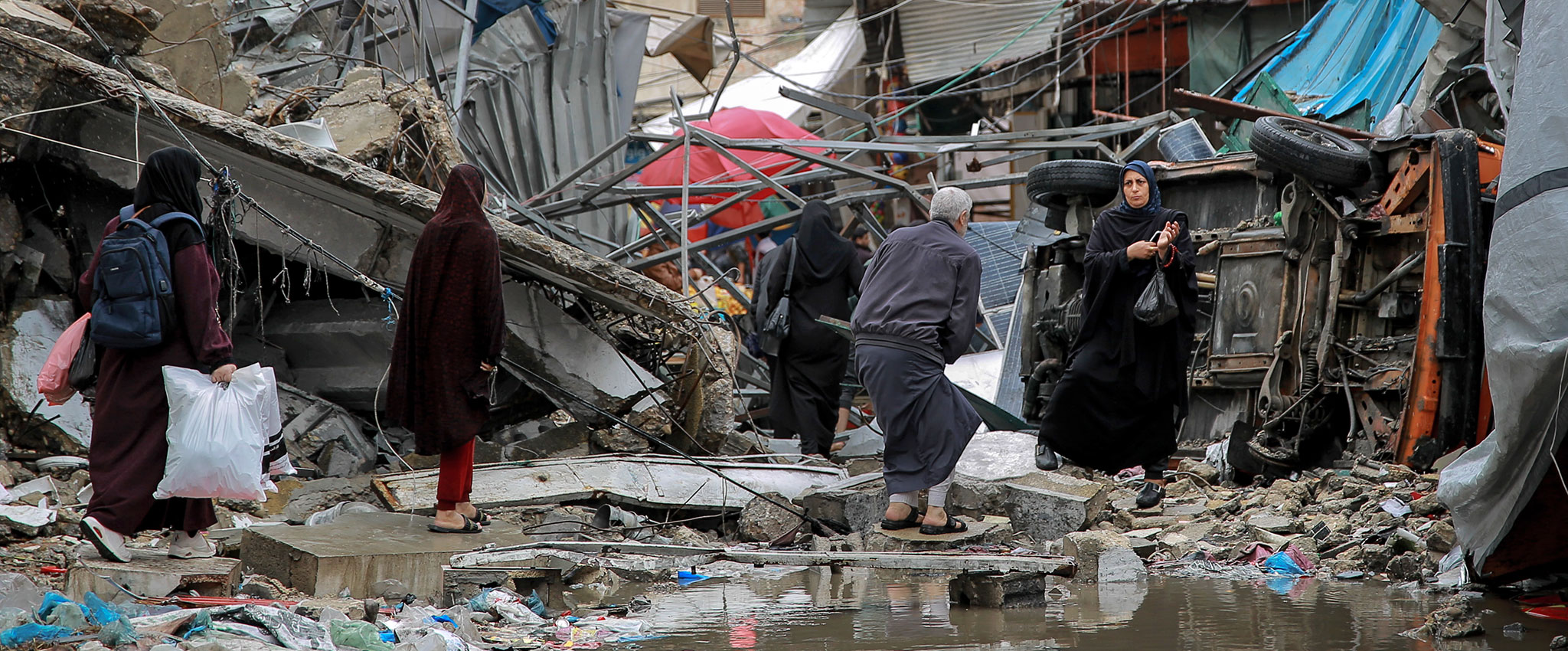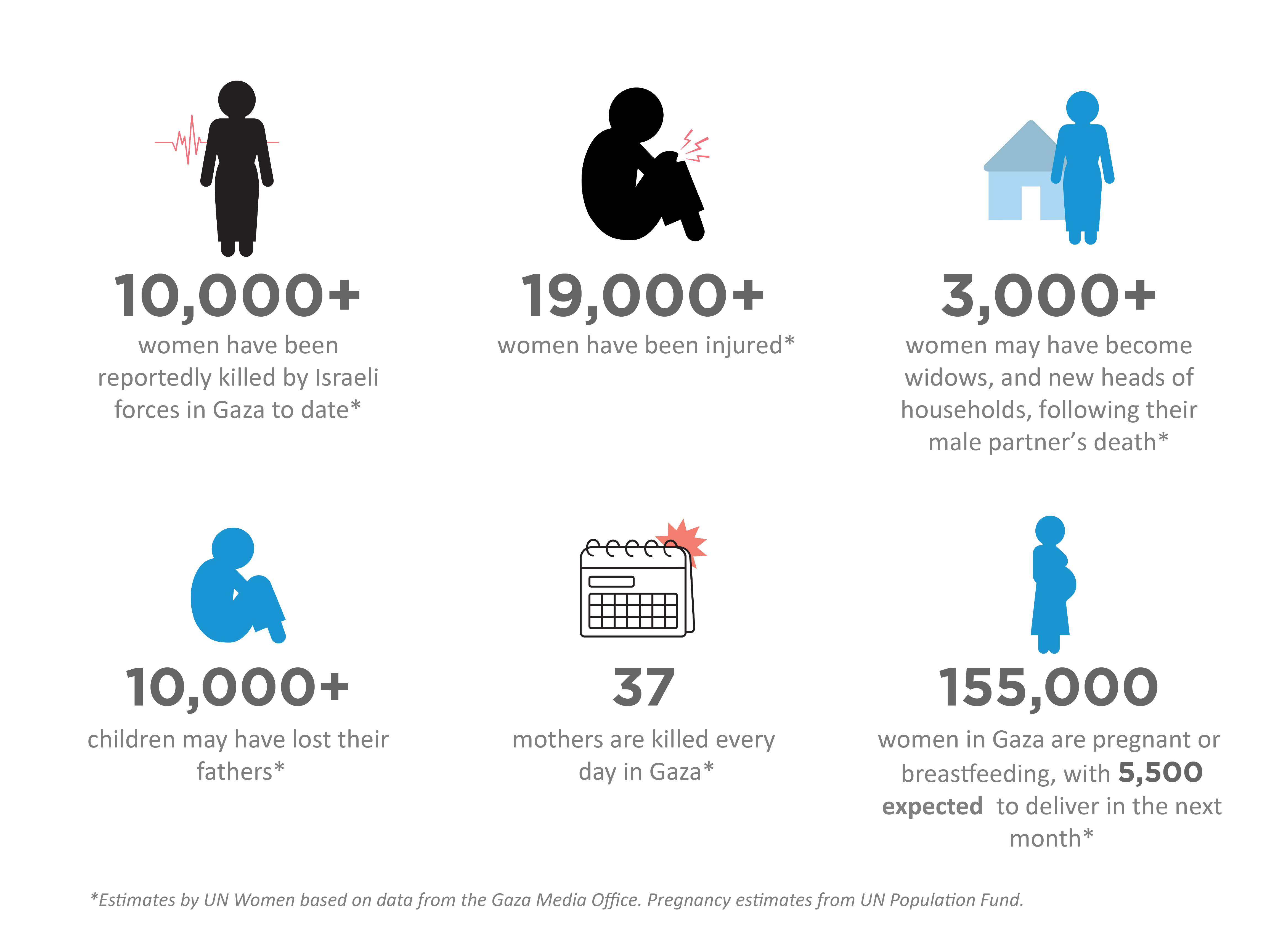Facts and figures: Women and girls during the war in Gaza
Date:

After the 7 October 2023 attack by Hamas on Israel, followed by the Israeli Armed Forces’ strikes on Gaza, UN Women has worked to analyse the differentiated impact on women, men, boys, and girls, to ensure adequate responses to their needs.
In Israel, the October 7 attack killed some 1,200 people, including many women and at least 33 children. UN Women is alarmed by the numerous accounts of gender-based atrocities and sexual violence during those attacks, and since. In addition, some 250 people, including approximately 65 women, were abducted.
Hundreds of thousands of civilians in Gaza have spent months living under unbearable conditions. Hundreds of thousands of women and girls have been displaced, and more than 30,000 Palestinians have been killed. UNICEF have called Gaza the "most dangerous place to be a child".
The people of Gaza are in the midst of an epic humanitarian catastrophe. Four in five Gazans already face hunger and starvation, according to the World Food Programme, and there is risk of famine. The data below, consisting of estimated figures, offers a snapshot of how women and girls in Gaza have endured attacks and displacement, as well as social and economic disruptions, since 7 October.
UN Women has had an office in Palestine since 1997 to help women achieve their social, economic, and political rights.** We remain present on the ground in Gaza and the West Bank to provide support and assistance and will do so for as long as it takes.
UN Women calls for an immediate humanitarian ceasefire as well as the immediate and unconditional release of all hostages and sustained and unrestricted humanitarian access to facilitate the entry and provision of assistance, including food, water, fuel, and health supplies at the scale required to meet the full needs of women and girls in the Gaza Strip.
